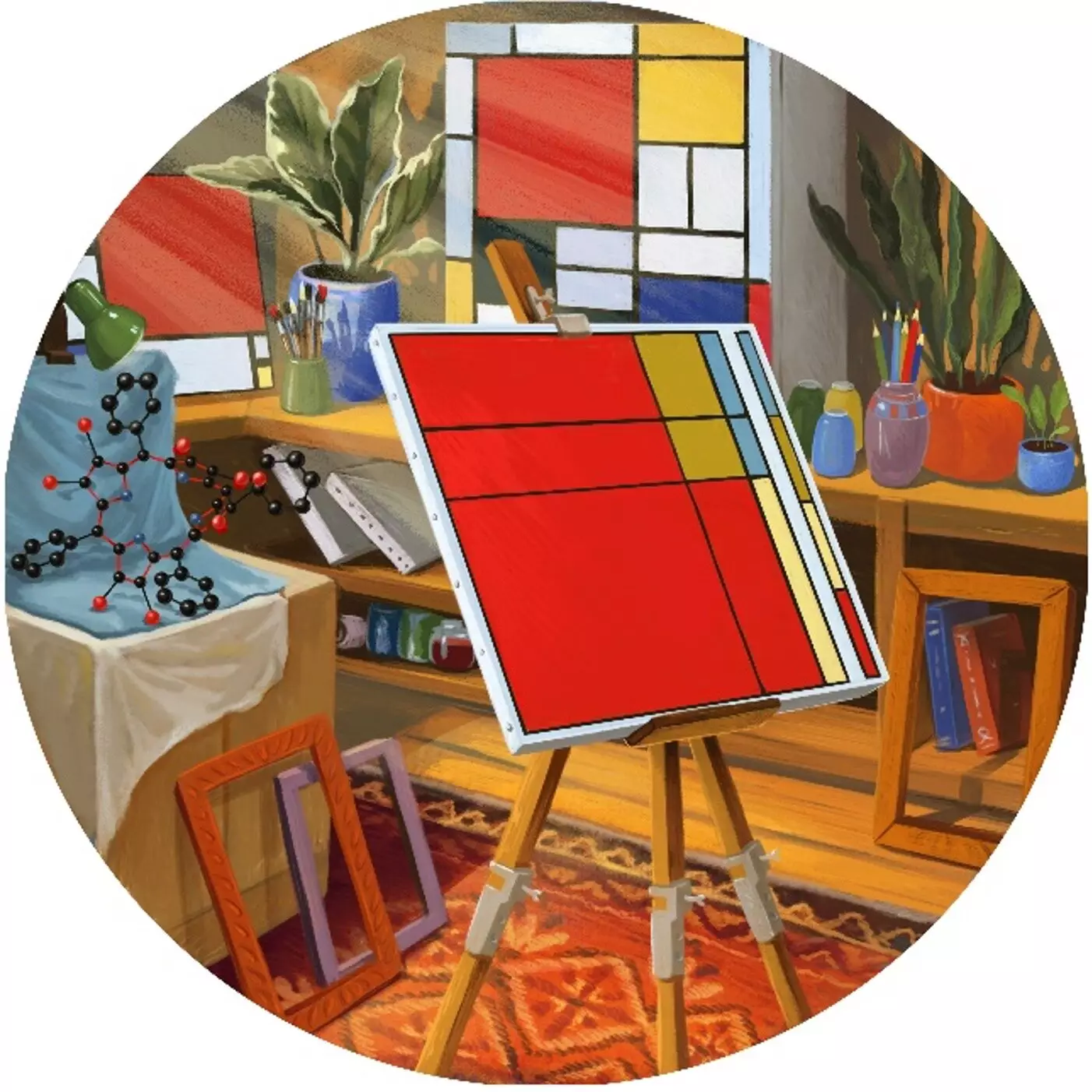In an exciting crossover between the realms of science and art, researchers from Trinity College Dublin have leveraged technology to represent molecular structures through the lens of acclaimed Dutch artist Piet Mondrian. By employing a unique computer program, these scientists are not merely depicting chemical compounds; they are transforming complex molecular arrangements into stunning, color-blocked visuals reminiscent of Mondrian’s iconic style. This innovative method opens new avenues not only for scientific exploration but also for artistic inspiration, prompting a reevaluation of how we perceive the building blocks of life.
The juxtaposition of art and science is not a novel idea; however, it has rarely been executed with such ingenious flair. Mondrian’s artwork, characterized by primary colors and grid-like forms, has long transcended the art world, infiltrating design, architecture, and now, scientific visualization. Through their program, which can be explored at http://www.sengegroup.eu/nsd, the researchers are pioneering a method that seamlessly marries the principles of chemistry with a visual art form that speaks universally, transcending barriers of technical jargon that often confine scientific narratives.
Symmetry Redefined: Insights into Molecular Architecture
A particularly noteworthy aspect of this endeavor is the emphasis on symmetry — a fundamental characteristic that plays a crucial role in the behavior and properties of molecules. By condensing three-dimensional molecular data into a two-dimensional representation inspired by Mondrian, the scientists provide a fresh perspective on symmetry that may have otherwise remained obscured. This artistic algorithm acts as a gateway, enabling both researchers and lay audiences to engage with intricate chemical concepts in a visually compelling manner.
Professor Mathias O Senge, the project’s leading mind, underscores the broader implications of this marriage between science and art. He states that the “paintings” produced are unique representations of each molecule, arguing that this artistic lens can facilitate a deeper understanding of complex scientific phenomena. The program has enormous potential in fostering greater insights into molecular structure, allowing scientists to visualize the relationships between chemical properties much more intuitively.
Bridging the Gap: Art as a Universal Language
Christopher Kingsbury, a key contributor to this project, emphasizes the necessity for a universal method of displaying molecular structures. In chemistry, how a molecule behaves can vary significantly based on environmental factors, and visual representation is vital for grasping these dynamics. By stripping away superfluous details, the researchers can highlight essential characteristics while maintaining a connection to the original chemical truth—directly drawing parallels to Mondrian’s search for simplicity and abstraction in his own work.
This approach not only democratizes complex scientific ideas but also highlights the significant overlap between scientific inquiry and artistic expression. The idea is refreshing in its optimism; it diminishes the often intimidating and opaque nature of scientific communication. Through the vibrant colors and structured layouts of the generated artworks, scientists can creatively convey complex ideas to an audience that may not have a background in chemistry, thus fostering a greater appreciation and understanding of molecular science.
Molecular Masterpieces: A New Frontier in Biological Research
The application of this artistic methodology extends beyond mere visualization; it has practical implications in the study of biomolecules like porphyrins, often referred to as the “colors of life.” As significant players in biological systems, porphyrins are essential to various functions, including photosynthesis and cellular respiration. Senge’s previous research has already unveiled new paths in understanding these remarkable pigments, and this novel approach could further unravel their complexities.
Employing artistic techniques to study biological phenomena not only enhances understanding but could lead to innovative applications, such as the development of biological sensors designed to detect environmental pollutants. This integrated exploration of art and science makes a strong case for interdisciplinary approaches in research, advocating for a holistic view of both fields that can yield transformative insights.
In a world increasingly dominated by data-driven analysis, the ability to view science through an artistic lens breathes new life into the narratives we tell about our understanding of the natural world. The artistic representations born from scientific data challenge the traditional ways we communicate complex ideas. As we continue to explore synergy between disciplines, ventures like these encourage a culture of creativity, inspiring future generations to embrace both the beauty of art and the intricacies of science. As Professor Senge astutely articulates, great art can indeed provide a new perspective on familiar elements, promoting a deeper connection to the very essence of life itself.

